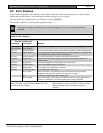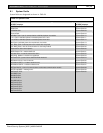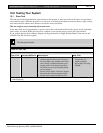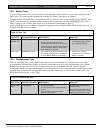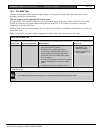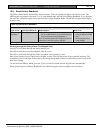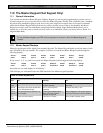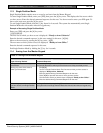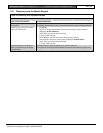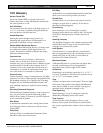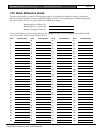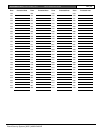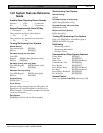
DS7400XiV4-EXP | User Guide | 12.0 Glossary EN | 34
Bosch Security Systems | 6/05 | 4998154961B
12.0 Glossary
Access Control PIN
An Access Control PIN is a special code to turn
electric door locks or other mechanisms connected to
the control panel on or off.
Area (Partition)
An area exists when the system is divided up into 2, 3,
4, 5, 6, 7, or 8 areas or partitions. Keypads within an
area can interact with only that area.
Armed/Disarmed
Arming the system (burglar zones) turns it on.
Disarming the system turns it off. Remember, fire
protection (if installed) is always Armed/on.
Central Station/Monitoring Service
A Central Station/Monitoring Service is a facility used
to continuously monitor phone signals from your
system. Personnel are trained to dispatch the proper
authorities when necessary.
Common Area
A Common Area is an area that is connected to
another area or all the areas. It may be used as a
common entry way to separate areas. A Master keypad
would normally be found in the Common Area. A
Common Area is only armed when all the areas it is
connected to are armed. It is disarmed when at least
one of the areas it is connected to is disarmed.
Custom Arming
Custom Arming is a type of arming that uses the [#][4]
sequence. It is only a valid sequence if programmed by
the installing company. It is a specific type of arming
designed for your individual installation needs. Ask
your installing company to explain Custom Arming
further.
Disarming Command Sequence
The Disarming Command Sequence is the sequence of
keys you press at the keypad to disarm the system
and/or silence alarms. It consists of your PIN followed
by the command (#) button.
Door Strike
A mechanism connected to the control panel to limit
access through a door to those users with an Access
Control PIN.
Entry Delay
An Entry Delay is a predetermined amount of time
that allows entry into an armed area.
Exit Delay
An Exit Delay is a predetermined amount of time that
allows you to exit an area just after you arm it.
Faulted Zone
A Faulted Zone is a zone that is not ready to arm (for
example, an open door or window). It can also be
described as being triggered.
Force Arming
Force Arming is a way of arming the system by
bypassing zones that are not ready to arm. You should
avoid Force Arming because it reduces the level of
security.
Installing Company
The Installing Company is the company that physically
installed the system. It may or may not be the same
company who monitors the system.
Local System
A Local System is a system that has a control panel
that is not programmed to call a monitoring service. It
sounds only local (on site) bells or sirens when an
intrusion or fire alarm is detected.
Monitored System
A Monitored System is a system that uses phone lines
to notify a monitoring service of programmed
abnormal events such as burglar or fire alarms.
Partitioning
Partitioning is to divide the system into 2, 3, 4, 5, 6, 7,
or 8 areas or partitions. This allows the system to act as
2, 3, 4, 5, 6, 7, or 8 separate systems.
Zone
A Zone is an input to the control panel. There are eight
hard-wired zones on the control panel and additional
zones may be added. A zone is usually some type of
detection device designed for burglar or fire.
Zone Bypassing
Zone Bypassing is a way of arming the system by
deliberately eliminating zones to be armed.
Zone Function
A Zone Function is the description of how a zone
behaves in the system. Zone Functions usually define
how a zone responds when armed or when it detects an
alarm.



